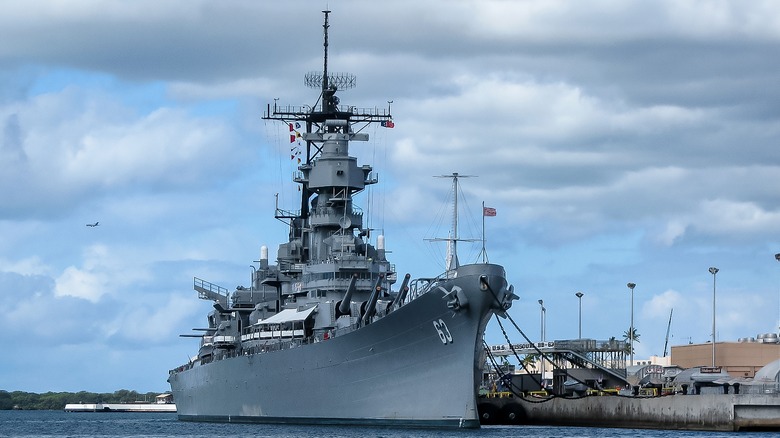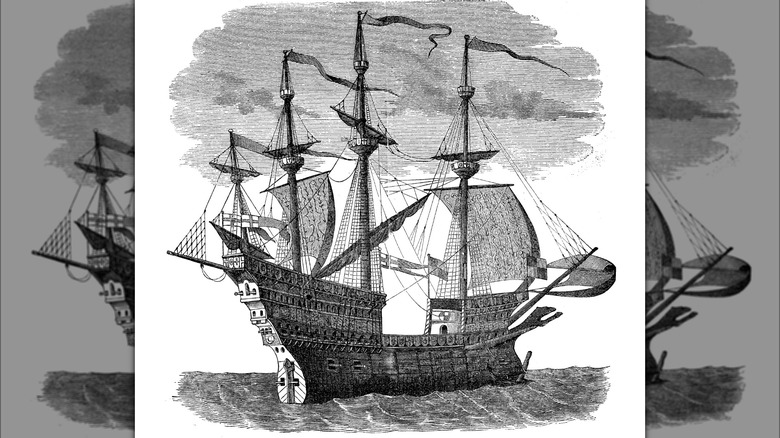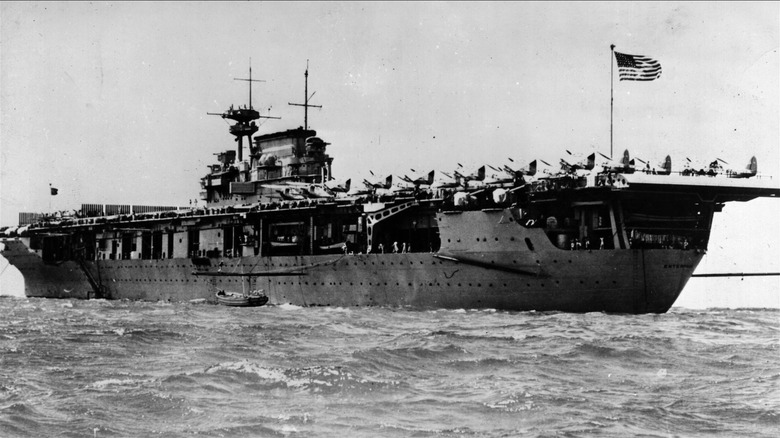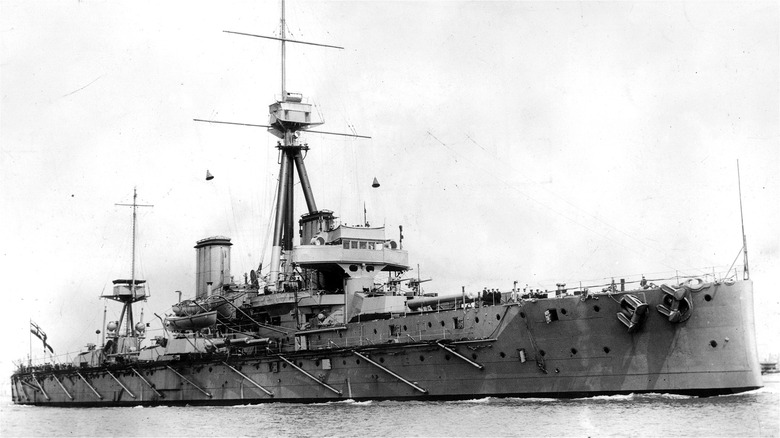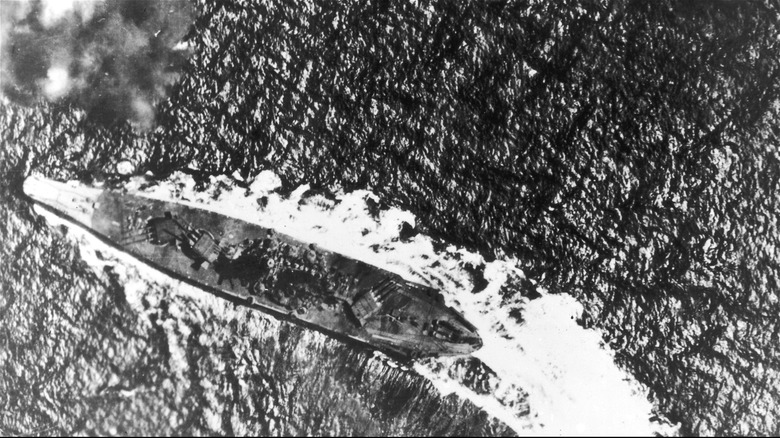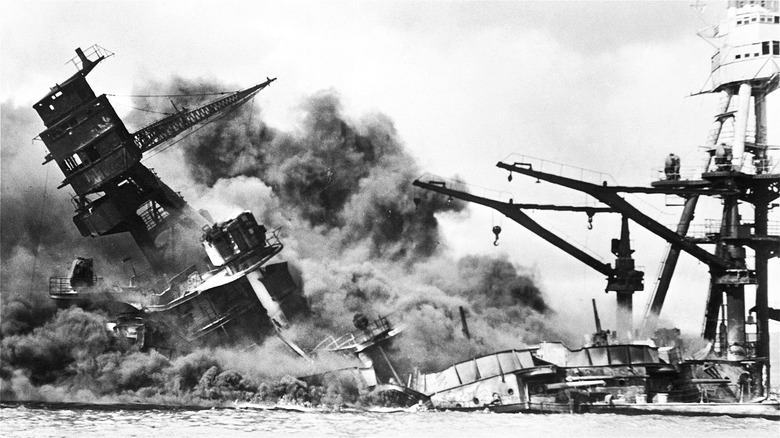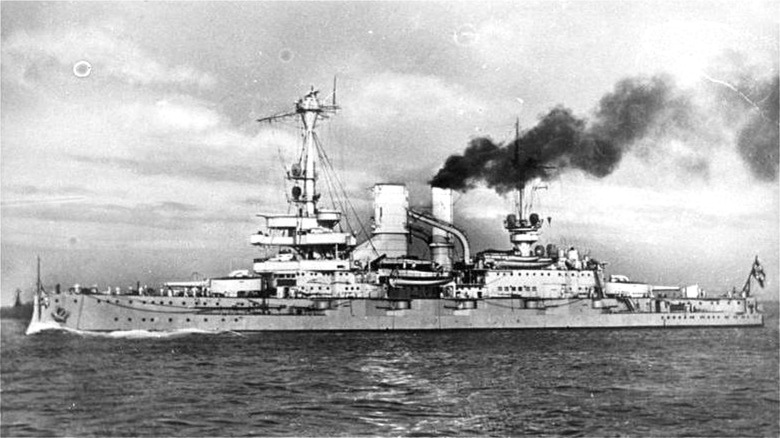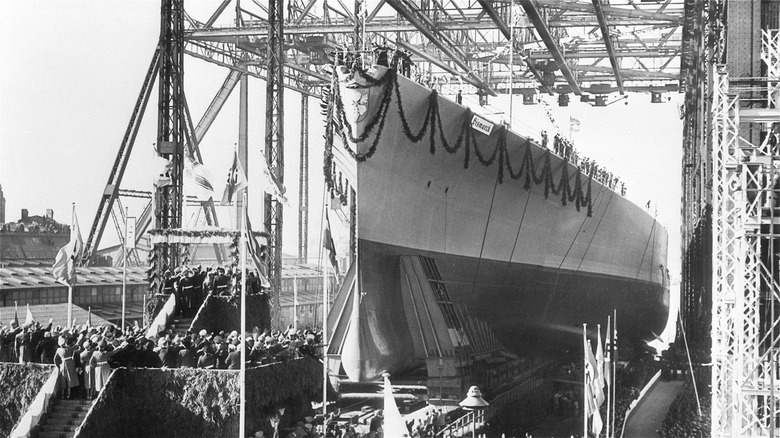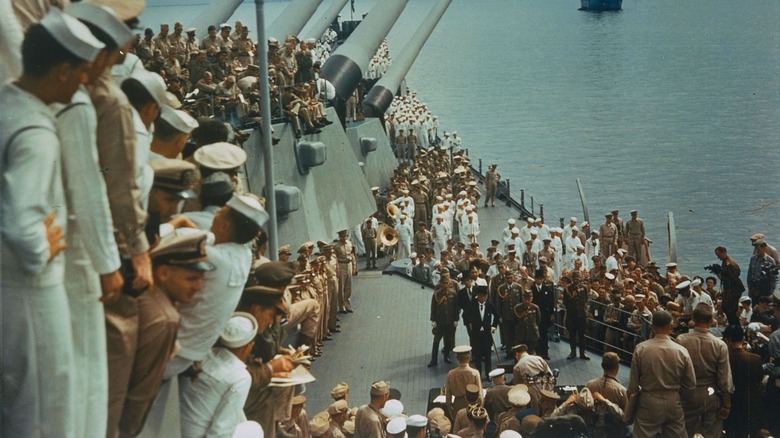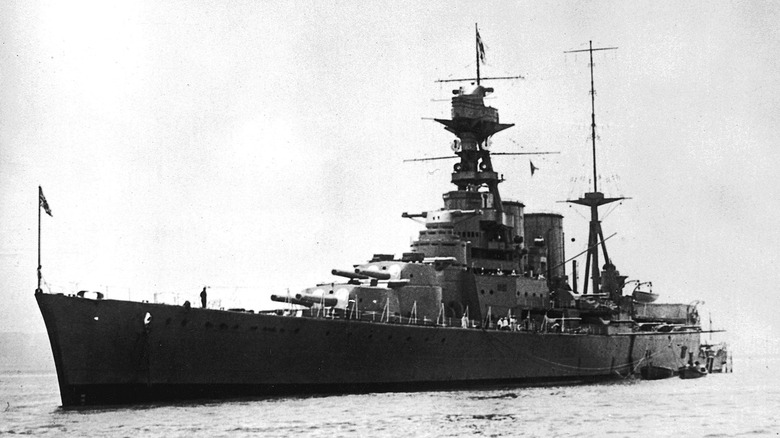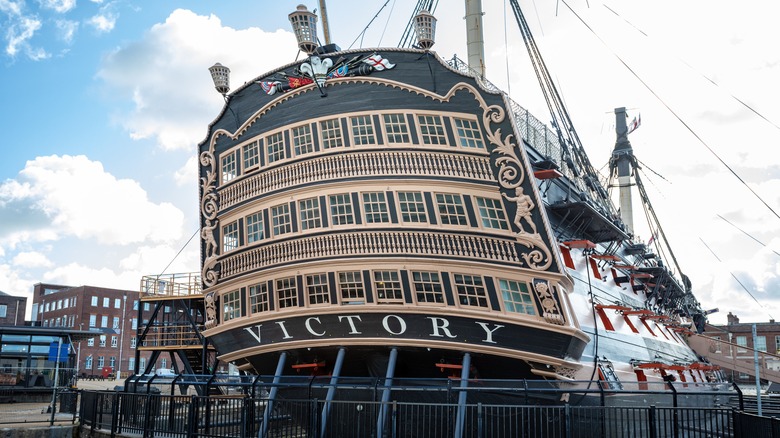10 Of The Most Historically Significant Warships In Military History
Navies have always been important components of geopolitical power. From the ancient armadas of the Egyptians and the Greeks to the modern fleets of the British and the Americans, the might of a nation's navy has dictated security, influence, and power.
However, naval power is anything but consistent. British victory over the larger Spanish Armada in 1588 proved that sometimes speed and agility were preferable to sheer size. Conversely, British dominance in the 19th and 20th centuries showed that numbers were very much crucial in suppressing one's enemy, as they did against the Imperial German Navy during World War I.
At special moments through the course of human conflict, historical significance can be located not so much in a nation's fleet but in a single, incredible ship. Some of these are ships unique in their design, such as HMS Dreadnought, which revolutionized naval combat and triggered an arms race. Other ships unique in performance like USS Enterprise, the most decorated ship in American history. Then there are the ships with a legendary connection to their country and commander, most notably HMS Victory, which Admiral Horatio Nelson led into a battle that changed the course of history.
Here are 10 of the most historically significant warships in military history.
Mary Rose
Built in Portsmouth between 1509 and 1511, the Mary Rose was Henry VIII's favorite ship. Length estimates range from 110 feet to 148 feet and the ship weighed up to 700 tons at its peak, typically carrying around 60 to 80 guns and a crew of between 400 to 500 men.
Action against the French came in 1512 at the Battle of Saint-Mathieu, off the coast of Brest. In history's first engagement between ships with lidded gunports, the Mary Rose attacked French flagship Grand Louise, destroying her main mast and killing up to 300 men. The battle was an English victory.
The Mary Rose remained an important ship over the coming decades, undergoing numerous repairs and playing host to important dignitaries like Holy Roman Emperor Charles V. War resumed between England and France in 1544. That year, the Mary Rose engaged in the successful Siege of Boulogne, but tragedy struck on July 19th, 1545. As Henry VIII watched from Southsea Castle, the Mary Rose rushed into the Solent and intercepted a group of French galleys, but as she turned to aim her cannon, the ship caught a strong breeze and keeled over, taking on water that caused her to list and then completely sink, killing all but about thirty of her 700 crew.
In 1982, the Mary Rose was lifted after spending some 440 years buried under mud. Today, you can view the fascinating remains of the shipwreck at Portsmouth Historic Dockyard.
USS Enterprise
With 20 battle stars, the USS Enterprise aircraft carrier was the most decorated ship of the World War II. Known as The Big E, the aircraft carrier engaged in 18 of the Pacific Theater's 20 major actions, including the explosive turning point of the Pacific Theater, the Battle of Midway.
At Midway, Enterprise's aircraft helped destroy four Japanese carriers – Akagi, Kaga, Soryu, and Hiryu. The Japanese fleet remained powerful, but it never recovered the losses of that great battle. Enterprise pushed on, defeating enemy forces at the battles of the Eastern Solomons, Santa Cruz Islands, Guadalcanal, and Leyte Gulf.
Perhaps the Enterprise's greatest moment came during the Battle of the Philippine Sea in 1944, also known as the Great Marianas Turkey Shoot. In just two days, Enterprise and her comrades destroyed 300 Japanese planes and three aircraft carriers.
By the end of the war, the USS Enterprise had downed 911 enemy planes, sunk 71 ships, and damaged or destroyed 192 others. Shockingly, despite this legendary service, efforts to turn the USS Enterprise into a museum ship failed and she was sold for scrap in July 1958.
HMS Dreadnought
Launched in 1906, the HMS Dreadnought changed naval warfare forever. She was such a revolution in design that it gave its name to an entire class of ships — for the following decades, the world's competing navies didn't have battleships, they had dreadnoughts.
At 526 feet long and displacing 18,000 tons, HMS Dreadnought made huge advancements in speed and firepower. It used steam turbines instead of steam pistons to power its four propeller shafts, and gained even more speed by implementing mixed coal boilers with fuel injection. In all, HMS Dreadnought hit 21 knots, smashing all battleship speed records.
Dreadnought's guns changed the landscape, too. She was the first all-big-gun warship, meaning the Dreadnought had only large caliber guns; in her case, five batteries of 12-inch guns arranged in twin turrets. Improvements in naval gunnery obviated the need for short range combat and, therefore, secondary caliber guns. A mechanical computer bolstered Dreadnought's huge power, allowing the crew to operate the guns with centralized control.
All of this potent innovation caused naval arms races across the world, especially between Britain and Germany. Superdreadnoughts such as HMS Queen Elizabeth quickly sidelined the Dreadnought less than a decade later, obsolescing her with 15-inch guns, 13-inch thick armor, and a top speed of 23 knots. Consequently, war service was limited; Dreadnought's only action came in March 1915, when it rammed and sank U29.
By 1920, the navies of Britain, Germany, and South America had produced 120 dreadnoughts, foreshadowing the armament politics that defined the Cold War between the United States and the Soviet Union decades later.
Yamato
At 72,809 tons, the Yamato was the biggest battleship ever built, alongside her sister ship Musashi. The awesome beast was launched in December 1941 after six years' construction. With 18-inch guns, formidable armor, and efficient 27 knot speed, no enemy ship could match her size and power. However, the Yamato was already obsolete at launch, as air power had replaced battleships by World War II. Aircraft and aircraft carriers could project power much further than even the Yamato's mighty 18-inch guns, which had an unprecedented 25-mile range. The Yamato would highlight this better than perhaps any other ship.
On April 7, 1945, the Japanese sent Yamato and nine other ships on a delusional sortie to beach itself near the Allied fleet off Okinawa and fight to the death. However, American submarines spotted the fleet before it got within range of any surface vessels. Over 250 American aircraft descended on the Yamato, tearing the deck up with bombs and .50 caliber machine gun fire, causing a fire in the superstructure.
Torpedo bombers followed, striking the ship and listing the massive structure to port. Just before the Yamato fully capsized, its forward magazine exploded and the ship plunged to the seabed 1,100 feet below. Japan's largest battleship was gone and it took an entire era and philosophy down with it.
USS Arizona
The USS Arizona was the chief victim of the attack on Pearl Harbor, one of the most famous strikes of World War II. An armor-piercing explosive started an enormous fire in Arizona's main magazines, damaging the ship beyond repair and killing over 1,170 crewmen, roughly half the 2,400 U.S. servicemen who died that day.
Among the dead were 23 sets of brothers. Only one full set of brothers, Kenneth and Russell Warriner, survived the attack. Such an appalling loss caused US authorities to advise relations against serving together, but many stuck together in combat, including the five Sullivan brothers who enlisted after their friend, Bill Ball, died on the USS Arizona. Tragically, the five young men all died on the USS Juneau, which sank to 13,800 feet during the Battle of Guadalcanal.
The destruction of the USS Arizona – then one of the largest ship in the U.S. Navy's fleet — became emblematic of the attack on Pearl Harbor, the day which will live in infamy. Finally, after years of isolation, the American people entered World War II, galvanized in part by the smoldering wreck of the USS Arizona.
SMS Schleswig-Holstein
The Schleswig-Holstein launched on December 17, 1906, eight years before Europe plunged into the First World War. She was 413 ft long, 72 ft wide, and displaced 13,200 tons of water. Armament included four rapid-fire 28 cm cannons, 14 rapid-fire 17 cm cannons, 20 rapid-fire 8.8 cm cannons, and a torpedo magazine.
For the first two years of World War I, the Schleswig-Holstein served as a training ship. This changed during the brief, bloody Battle of Jutland in 1916, when the German navy attempted to lure the British fleet into battle as part of their offensive strategy. Schleswig-Holstein joined 250 ships in the clash off the Danish coast and she received fire from a 34 cm gun that killed three men and wounded eight others. The Battle of Jutland killed 6,768 British to Germany's 3,058 dead, but Jutland did not erode Britain's dominance of the North Sea and Germany remained blockaded.
After the battle, Schleswig-Holstein was repaired and returned to service as a training ship before being decommissioned on May 2, 1917. She was reinstated, however, as one of the eight ships not confiscated under the terms of the Treaty of Versailles. After a major refit in the mid-1920s, the Schleswig-Holstein became the Reichsmarine's flagship until September 22, 1935.
However, Schleswig-Holstein's true place in history came just under four years later at 4:43 am on September 1, 1939, when the ageing battleship opened fire against Westerplatte, a small military installation in Danzig, Poland. These were the first shots of the Second World War.
Bismarck
Perhaps the most famous of all German ships, the Bismarck was named after Otto von Bismarck, the Prussian statesman who unified Germany after the Franco-Prussian War in 1871. The Bismarck battleship was commissioned on August 24, 1940, and it was Germany's largest battleship until her sister ship Tirpitz entered the Kriegsmarine in February 1941.
Bismarck was 821 feet long, 118 feet wide, and displaced 50,900 tons owing to her thick armor plating and considerable armament. She had 62 guns, including eight 15-inch guns and 12 six-inch guns. The largest guns fired 1,760 lb shells with a range of 22.7 miles. Despite her scale and notoriety, Bismarck's career would be short but not without explosive triumph. During the Battle of Denmark Strait in May 1941, Bismarck and Prinz Eugen fought off an attack by HMS Prince of Wales and HMS Hood, Britain's largest battleship.
Three 14-inch British shells hit the Bismarck's port side, causing over 1,000 tons of water to flood the ship's front upper deck. The damage was manageable, though, and the Bismarck returned fire with greater success than anyone could have expected. A 38 cm shell hit one of Hood's magazines, causing an awesome explosion that cut the ship in half and sent it to the seabed.
Furious, the Royal Navy pursued the Bismarck across the Atlantic, attacking her with Swordfish dive bombers that rendered her inoperable. On the morning of May 27, after hours of relentless attacks, Captain Lindemann ordered the crew to scuttle the ship, sending her 15,700 feet below the surface.
USS Missouri
Built in 1944, the USS Missouri entered the Pacific in 1945 and took part in the invasions of Iwo Jima and Okinawa, bombarding enemy positions with her 16-inch guns. An important role, no doubt, but not the history-making actions of USS Enterprise and other prolific battle star winners. The Missouri's place in history came after Japan's surrender on August 15, 1945. Two weeks later, on August 29, Missouri entered Tokyo Bay with 258 ships to host the Japanese Instrument of Surrender ceremony.
General Douglas MacArthur organized the event with meticulous detail. The ship was cleaned, repainted, and positioned according to Commodore Matthew Perry's ship in 1853, when an American force came ashore in the hitherto reclusive Japanese nation. MacArthur also procured Commodore Perry's American flag, displaying the 31-star ensign on the starboard bulkhead, just above the historic ceremony.
After inclement weather delayed proceedings, the ceremony took place on Missouri's deck at 9:02 AM on September 2. 23 minutes later, Japanese and Allied representatives had signed the document, ending the greatest conflict in human history. The USS Missouri was an icon of history, and her story did not end there.
The Missouri was twice deployed during the Korean War, first from September 1950 to March 1951, and later from September 1952 to March 1953. Chief among her actions were bombardments during the Battles of Inchon and operational support at the Chosin Reservoir. She was called upon again over 30 years later, escorting Kuwaiti tankers in the Middle East. Then, during the Gulf War, Missouri attacked Iraqi forces during the Battle of Kafji.
HMS Hood
Nicknamed the Mighty Hood, HMS Hood was the last great battlecruiser of the British Empire. Launched in 1920, she was the largest battleship in the world during much of the interwar period, measuring 860 ft long and with a displacement of some 41,125 tons. Hood boasted numerous armaments including eight Mk I 15-inch main guns and an assortment of anti-aircraft guns, Pom-Pom two pounders, and batteries of naval variant Vickers machine guns.
Hood's first combat experience occurred in July 1940 during the controversial attack against the French fleet in Mers-el-Kébir. After the Fall of France, Winston Churchill could not risk the French fleet falling into German hands. HMS Hood and 13 other ships of Force H bombarded the French position. Four shells from HMS Hood struck the Dunkerque — the most powerful French ship — destroying her boiler rooms and forcing the ship to beach within 10 minutes.
However, just ten months later on May 24, 1941, HMS Hood and HMS Prince of Wales intercepted the Bismarck and heavy cruiser Prinz Eugen in the Denmark Strait. At 5:52 AM, Hood opened fire and the Prince of Wales followed a minute later. The British scored several hits, including a strike to the Bismarck's forward compartments, which flooded.
The British had the upper hand, it seemed, but then something astonishing happened. A fire on Hood's boat deck grew rapidly and, at around 6 AM, it caused an explosion so violent that it tore the ship in two. Within three minutes, the pride of the British fleet submerged under the waves and sank over 9,000 feet.
HMS Victory
HMS Victory was the lead ship of the British Mediterranean Fleet that defeated French and Spanish forces at the Battle of Trafalgar in 1805. Admiral Horatio Nelson's command aboard Victory established British naval supremacy that lasted until World War II. Today, HMS Victory can be visited at Portsmouth Historic Dockyard.
Victory's construction began at Chatham Dockyard in 1759 and used 2,000 oak trees to build the hull. Victory launched six years later at a cost of £63,176, or over £10 million today. The 100-gun ship of the line was 186 feet long, weighed 2,162 tons, and could carry up to 800 men. Victory served in the War of American Independence in 1778, where she demonstrated her firepower and especially speed, which was greater than that of her smaller contemporaries. The next major engagement came in 1797 when, as the flagship of the Mediterranean Fleet, Victory won the bruising Battle of Cape St Vincent against the Spanish fleet.
At the outset of the Napoleonic Wars in 1803, the Royal Navy assigned Victory as Admiral Horatio Nelson's flagship. On October 21, 1805, Nelson intercepted Pierre Villeneuve's fleet off the Cape of Trafalgar. The ensuing battle lasted five to six bloody hours, killing 450 British and over 4,000 French and Spanish. In the early afternoon, a sniper aboard Redoubtable shot Nelson as he stood on Victory's deck, puncturing his lung and severing a major artery. The wound was fatal, but the admiral had seen enough to know he'd won the battle. Nelson died at 4:30 PM.
